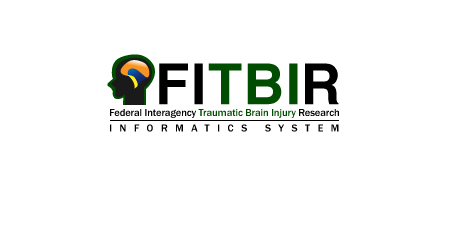FITBIR Database Moves TBI Research Forward
Traumatic brain injury, a problem that has existed presumably as long as human beings have walked the Earth and bumped their heads, is known in the world of today as "the silent epidemic."
Each year, traumatic brain injuries contribute to a substantial number of not only permanent disabilities but also deaths, with recent data approximating a roundabout 1.7 million annual cases. TBI is a contributing factor to about one-third, or 30.5%, of all injury-related deaths in the U.S., and in fact, traumatic injury, such as that produced by household, industrial and automobile accidents, is by far the leading cause of death from ages 1 to 44.
A serious public health problem in the U.S., TBI remains a surprisingly mysterious occurrence, with researchers and scientists only beginning to unravel the secrets of the human brain. Due to the highly inconsistent reported cases of TBI, involving a variety of causes, treatment and development of objective diagnostics have proven especially challenging amidst the medical community. Evidence continues to point to a link between head trauma and long-term, degenerative brain disease, with researchers becoming more desperate than ever before to understand this puzzling injury.
There are still so many questions to answer, which is where the Federal Interagency Traumatic Brain Injury Research database comes in.
The FITBIR database is a collaborative effort by participating National Institutes of Health institutes and centers, and the U.S. Army Medical Research and Materiel Command to develop a biomedical information system and data repository for TBI research. FITBIR, designed to speed up comparative effectiveness research on brain injury treatment and diagnosis, has already received funding at $10 million for over 4 years. If all goes according to plan, this database will serve as a central storage area for not only new data input, but also with the capability to link current databases to one another, allowing the valid comparison of results across multiple studies.
"FITBIR represents a whole new way of doing research," said Dr. Douglas Gibson, deputy neurotrauma research coordinator for the Combat Casualty Care Research Program and one of three members of the FITBIR Informatics System Executive Committee. "Increasing sophistication in the fields of databases and informatics has produced technologies that make data sharing feasible."
"In the old days, scientists worked alone (the Mad Scientist in the basement model), but more and more, science has become a collaborative enterprise," Gibson continued.
The Defense Health Program, through agreement with the USAMRMC, is the lead Department of Defense component funding the FITBIR database.
Battlefield trauma is the overall focus of USAMRMC's Combat Casualty Care Research Program. Col. Dallas Hack, director of the CCCRP, coordinates and leads cutting edge research focused on new techniques and new products designed to save lives and reduce mortality of troops wounded in the line of duty. Considered one of the invisible wounds of war, TBI is one of the signature injuries of troops in Afghanistan and Iraq.
"Only by combining efforts through initiatives such as the FITBIR database can we hope to make major progress in this field," said Hack.
Not just a problem for the military, TBI has become an increasingly recognized problem in the sports arena as well. Contact sports like football can come with a wide array of injuries, so it is not surprising that participating organizations in this collaboration include the American College of Sports Medicine, the National Collegiate Athletic Association, and the National Football League.
"While athletes are especially prone to head injury, everyone is vulnerable through falls and accidents," said Gibson, "and the aftereffects of a blow to the head can be subtle to detect, but devastating to the individual affected and to the individual's friends and family."
The NFL donated $30 million in support of research on serious medical conditions prominent in athletes and relevant to the general population, making it the largest philanthropic gift the NFL has given in the league's 92-year history. In light of this generous contribution, the NFL is now recognized as the founding donor to a new Sports and Health Research Program; a collaboration with institutes and centers at the NIH.
"Public awareness of the aftereffects of head injury has lead to recognition that TBI is not only a major medical problem, but one that affects real people in a real way," said Gibson.
"The hope for FITBIR is that it will facilitate development of solutions to the problems of TBI prevention, diagnosis and treatment. We would like to see FITBIR promote collaboration and data sharing that will lead to effective solutions," he said.
FITBIR is a free, web-based resource for TBI researchers. For researchers just starting out, it provides a set of ready-to-use tools such as case report forms and a library of common data elements that simplify development of research proposals and protocols that meet the needs of funding agencies. For more information on FITBIR, go to
fitbir.nih.gov , and for information on common data elements, visit
commondataelements.ninds.nih.gov
, and for information on common data elements, visit
commondataelements.ninds.nih.gov .
.















